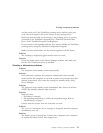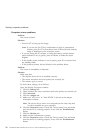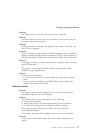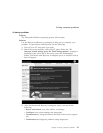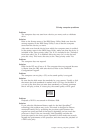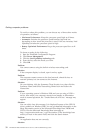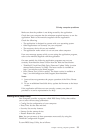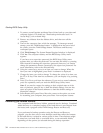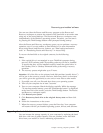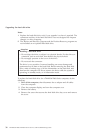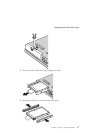
Problem:
The computer does not start from a device you want, such as a diskette
drive.
Solution:
Refer to the Startup menu of the BIOS Setup Utility. Make sure that the
startup sequence in the BIOS Setup Utility is set so that the computer
starts from the device you want.
Also make sure that the device from which the computer starts is enabled.
In the startup menu in the BIOS Setup Utility, make sure that the device is
included in the ″Boot priority order″ list. If it is included in the ″Excluded
from boot order″ list, it is disabled. Select the entry for it in the list and
press the x key. This moves the entry to the ″Boot priority order″ list.
Problem:
The computer does not respond.
Solution:
IRQs for the PCI are all set as 11. The computer does not respond because
it cannot share the IRQ with other devices. Refer to the ThinkPad
Configuration Program.
Problem:
The computer can not play a CD, or the sound quality is not good.
Solution:
Be sure that the disk meets the standards for your country. Usually, a disk
that meets the local standards is marked with a CD logo on the label. If
you use a disc that does not meet these standards, we cannot guarantee
that it will play, or that, if it does play, the sound quality will be good.
Problem:
Playback of DVD is not smooth in Windows 2000.
Solution:
If you select the Maximum Battery mode for the Intel SpeedStep
®
technology, this problem may occur. This mode is designed to achieve
maximum battery life by switching the processor speed between the
regular low speed and half of that speed, depending on how much the
processor is used. If the use increases, Intel SpeedStep switches the
processor speed to the lower speed. Operation in this mode can severely
degrade the performance of the processor, and thus cause the playback of
a DVD to be jerky.
Solving computer problems
Chapter 2. Solving computer problems 31



